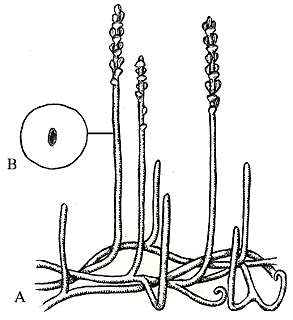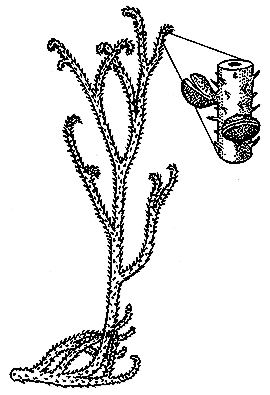| Lycophyta | ||
| Plants | Zosterophylls |
| Plants |

The zosterophylls are a small group of extinct primitive plants that may have been ancestral to the lycopsids. They are best known from the Early and Middle Devonian. Zosterophylls looked very much like the contemporary rhyniophytes and like trimerophytes. Like them, Zosterophylls lacked true leaves and roots, and photosynthesis was probably carried out all over the stems. As with the rhyniophytes each stem dividing into two branches of equal size (dichotomous branching).
Zosterophylls differed from other plants by having round to kidney-shaped sporangia (spore-cases) that were born on small stalks arranged in clusters along branches. That is, they had many lateral, rather than terminal, sporangia. The branch tips unrolled like the head of a fern.

Some genera, such as Zosterophyllum (top of page) and Gosslingia up to 50 cm tall) had smooth stems. Others, like Sawdonia (above, up to 30 cm tall), Serrulacaulis, and Crenaticaulis had stems covered with saw-tooth or scale-like spiny flaps of tissue that lacked vascularization and so were not true leaves. These same organs also occur among the trimerophytes.
University of California Museum of Paleontology -- Introduction to the Zosterophylls